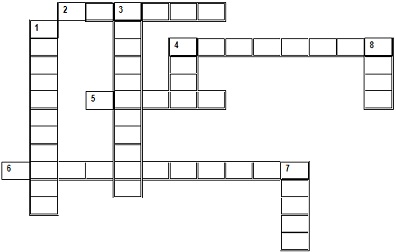Reference no: EM133077513
BSBSTR601 Manage innovation and continuous improvement - Central Australian College
Activity 1: Identify and list the key systems and processes in your organisation and identify an opportunity for improvement for at least one (1) key system or process.
Activity 2: Read Chapter 1 of the learner guide and complete the following True or False
Key metrics for process improvements can be derived from quality, cost, time, or stakeholder satisfaction.
Mentoring is a structured relationship that focuses primarily on building the necessary skills of the mentee to succeed in the current or next role.
Sustainability refers to the ability of an organisation to continue to create value in the long term.
The five best practices for effective stakeholder communication include transparency, consolidation, appreciation, strategy, and speed.
Of the four development stages, the team begins to work in sync, understand each other, and set ground rules in Performing stage.
For a continuous improvement project, stakeholders may be in internal or external to your organisation.
A minimum viable product is an important tool for testing and validating new and innovative ideas.
When consulting and seeking advice from stakeholders, close-ended questions are most effective and should be used frequently.
Activity 3: Read Chapter 1 of the learner guide and complete the following Task
Find the answers to the questions in the word search puzzle below.

1. This is an individual within or outside of an organisation who will help relatively inexperienced junior associates navigate their way more successfully through the corporate world, over the long term.
2. This is a demonstration of carrying out activities to achieve defined outcomes.
3. This is to create something new or to do something in a new way.
4. This is the team's mission.
5. This refers to the results of the action performed.
6. This is an individual who will be impacted by your activities.
7. This is a group of individuals brought together by shared goals and commitment.
8. This is a proposal for doing something, using a defined approach, with an associated timeframe.
Activity 4: Identify at least two market trends that are relevant to your organisation. Analyse these trends and demonstrate how they become opportunities in your workplace.
Activity 5: Market changes and trends include regulatory, customer, and financial changes.
The first step in gap analysis is to set your targets.
Environmental complexity deals with a large number of inter-related variables that impact work decisions.
Variance in performance reports from organisational plans can happen due to non- achievement of the expected outcomes only.
Performance metrics and key performance indicators are the same.
Collaborative coaching is a form of learning in the organisation.
SMART is an acronym that stands for Specific, Measurable, Achievable, Realistic, and Time-bound.
To integrate continuous learning across the organisation, leaders and senior executives need to create relevant policies.
Activity 6: Read chapter 2 of the learner guide and complete the following cross word puzzle

DOWN
1. A system for the flow of materials and resources (6,5)
3. The team that helps in negotiating with vendors (11)
4. Improvement method based on the principle of zero wastage (4)
7. Goal setting framework (5)
8. Target to be achieved (4)
ACROSS
2. Representation of data for evaluation (6)
4. Act of acquiring knowledge (8)
5. Shows a pattern of change over time (5)
6. A study to understand the missing elements in a project (3,8)
Activity 7: Describe your organisation's processes for identifying and managing risks. What categories of risks apply? Give an example of key risk and the contingency plan.
Activity 8: Location is a key element of communication.
A checklist is an effective way to ensure that you have obtained readiness confirmation
from all the necessary stakeholders for implementation.
All stakeholders would readily support the implementation of improvement projects.
Root cause analysis is a technique to investigate and analyse the causes of project failure.
Reporting is not a key element of implementation plans.
An organisation can have various knowledge management systems, such as work health and safety (WHS) management systems.
ADKAR is an acronym that stands for Awareness, Definition, Knowledge, Assessment and Reporting.
Risks can be prioritised in order of importance, which is calculated by the value of the impact.
Activity 9: Identify the keywords by solving the anagrams below.
KRIS
AUFLIER
CONNICYGNET
HNACEG
SLAPN
LIMENTEMP
NITRATIONS
Activity 10: Describe the reward programme in your organisation and identify one improvement to this programme that will encourage innovation and learning. Perform a cost-benefit analysis for implementing the improvement in your organisation's reward programme.
Activity 11:
Cost benefit analysis must include opportunity costs.
For operational improvement projects where the impact is on day-to-day activities, it is useful to monitor once a month.
Non-monetary rewards are effective and aim at the emotional engagement of the employee.
It is not required to take feedback from tool vendors or suppliers.
The feedback process entails two key steps, including send and receive.
Usually, feedback from customers should be voluntary.
Rewards and recognition planning should be tied to performance planning.
To promote innovation, organisations must penalise failures and discourage risk taking.
Activity 12: Find the answers to the questions in the word search puzzle below.
|
O
|
U
|
P
|
C
|
F
|
L
|
S
|
O
|
R
|
A
|
Y
|
R
|
E
|
X
|
A
|
X
|
|
C
|
R
|
T
|
L
|
G
|
R
|
E
|
W
|
A
|
R
|
D
|
H
|
N
|
G
|
O
|
T
|
|
E
|
E
|
O
|
R
|
U
|
B
|
P
|
X
|
K
|
S
|
G
|
P
|
Y
|
O
|
P
|
H
|
|
Q
|
C
|
X
|
W
|
G
|
Z
|
A
|
K
|
W
|
O
|
J
|
Z
|
S
|
Y
|
P
|
W
|
|
L
|
O
|
K
|
P
|
J
|
O
|
P
|
C
|
P
|
V
|
T
|
O
|
X
|
Y
|
O
|
Q
|
|
B
|
G
|
S
|
O
|
G
|
D
|
R
|
M
|
X
|
E
|
D
|
O
|
S
|
O
|
R
|
M
|
|
U
|
N
|
C
|
M
|
O
|
N
|
I
|
T
|
O
|
R
|
I
|
N
|
G
|
C
|
T
|
A
|
|
K
|
I
|
Z
|
E
|
E
|
Y
|
F
|
C
|
E
|
H
|
T
|
Z
|
N
|
D
|
U
|
Q
|
|
G
|
T
|
T
|
X
|
S
|
O
|
W
|
S
|
F
|
E
|
Y
|
L
|
O
|
C
|
N
|
M
|
|
N
|
I
|
N
|
X
|
K
|
W
|
K
|
U
|
O
|
A
|
H
|
V
|
N
|
P
|
I
|
A
|
|
R
|
O
|
C
|
D
|
D
|
B
|
H
|
Z
|
Q
|
D
|
R
|
A
|
J
|
A
|
T
|
E
|
|
L
|
N
|
R
|
G
|
C
|
R
|
W
|
F
|
V
|
S
|
U
|
H
|
P
|
L
|
Y
|
Y
|
|
E
|
H
|
N
|
S
|
H
|
Z
|
U
|
E
|
W
|
N
|
Q
|
O
|
Z
|
W
|
C
|
Z
|
|
B
|
M
|
P
|
A
|
Q
|
Z
|
M
|
K
|
O
|
M
|
N
|
C
|
T
|
D
|
O
|
I
|
|
H
|
Q
|
V
|
V
|
P
|
L
|
C
|
B
|
H
|
V
|
O
|
E
|
V
|
C
|
S
|
H
|
|
C
|
A
|
G
|
U
|
K
|
J
|
D
|
Q
|
K
|
S
|
N
|
P
|
H
|
U
|
T
|
L
|
1. This is a way to let the employee know that they are valued in the organisation, and their work is being noticed and appreciated.
2. This (initialism) is a method for cost benefit analysis.
3. This is usually associated with a tangible benefit to employees.
4. These are fixed costs in a project.
5. This helps to know whether the improvements have been adopted.
6. This is the cost spent on the selected project, rather than a different project.
Attachment:- Manage innovation and continuous improvement.rar